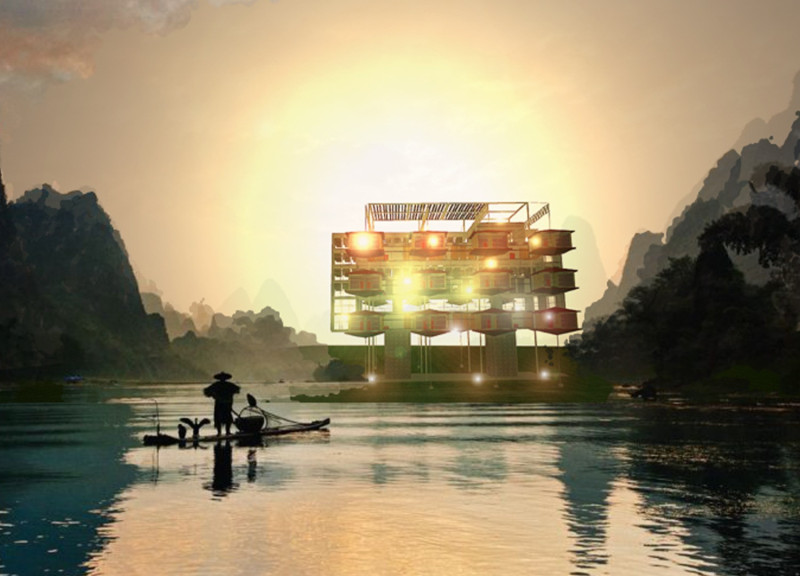5 key facts about this project
The Agro-Housing project addresses the significant social and economic challenges arising from rapid urbanization in China. As people move from rural areas to cities, traditional lifestyles are often lost, leading to unemployment and weakened community ties. The design focuses on integrating homes with urban farming, allowing residents to produce food while living in the city. This approach reflects both modern needs and cultural heritage, creating a structure that is as functional as it is meaningful.
Design Concept
The design combines apartments with a vertical greenhouse, creating a unique living experience that promotes urban agriculture. Rooms are suspended by metallic cranes, which adds an interesting visual element and provides a direct link between living spaces and the greenhouse. The project includes footbridges that connect different parts of the building, enhancing accessibility and encouraging interactions among residents, which helps foster a sense of community.
Vertical Greenhouse
Central to the project is the vertical greenhouse, designed for growing various crops like vegetables and fruits. This innovative feature allows residents to engage in food production without needing extensive outdoor space. Equipped with a drip irrigation system and natural ventilation, the greenhouse supports sustainable practices by enabling residents to produce their own food. This setup encourages self-sufficiency and reduces reliance on outside food sources, making the community more resilient.
Community Engagement
The project includes several communal spaces, such as a roof garden and a sky club, which promote social activities and interactions among residents. These areas serve as gathering spots where people can connect and share experiences. The design emphasizes collaboration and community building, providing spaces that draw residents together and enhance their quality of life.
Agro-Housing illustrates a practical and thoughtful approach to urban living. The thoughtful integration of farming within residential settings enriches the daily lives of its inhabitants. The design prioritizes sustainability and community while respecting cultural heritage, culminating in an environment that meets modern demands.


























